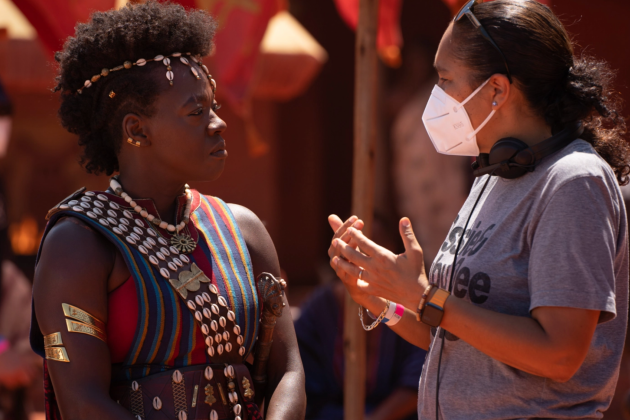Hollywood Actually Got Less Diverse Last Year

Representation in Hollywood backslid in 2022, according to two new reports. The USC Annenberg Inclusion Initiative found that fewer women and people of color directed major movies than the previous year. A second study, from the Center for the Study of Women in Television and Film at San Diego State University, also noted the drop in women directors, and further found that the percentage of women working in other roles behind the scenes in movies is lower compared to 2021.
The regression comes at a time when Hollywood has faced pressure to provide more opportunities to women, people of color, and artists from other marginalized communities. In 2020, the Academy of Motion Picture Arts and Sciences announced new diversity and inclusion standards for eligibility to win Best Picture. The standards related to on-screen themes, creative leadership, industry access, and audience development, and required the inclusion of women, people of color, LGBTQ+ people, and people with cognitive or physical disabilities or who are deaf or hard of hearing. There have been signs progress hasn’t been going as planned, however, like women directors and writers getting essentially shut out of Golden Globes nominations last month.
More from Rolling Stone
The USC Annenberg study, called “Inclusion in the Director’s Chair,” looked at the gender and race or ethnicity of directors behind the 100 highest-grossing movies last year. Only 9 percent were women, down 12.7 percent in 2021, and only 2.7 percent were women of color (per Variety). This tiny portion included some of the year’s best-reviewed movies: Chinonye Chukwu’s Till, and Gina Prince-Bythewood’s The Woman King. Directors who were Black, Asian, Hispanic or Latino, or multiracial also dropped from 27.3 percent in 2021 to 20.7 percent. This included Ryan Coogler, who directed Black Panther: Wakanda Forever, and Jordan Peele for Nope. The study said there were 3.8 white directors for every underrepresented director.
“Many people have traditions as they look back on the year past and on to the year ahead,” Dr. Stacy L. Smith, founder of the Annenberg Inclusion Initiative said in a statement. “At the Annenberg Inclusion Initiative, it seems that our tradition is to lament how little things have changed for women and people of color behind the camera in popular film. We’d like to see not only the tradition change but also the hiring practices that continue to marginalize women and people of color as directors.”
The SDSU study, called “The Celluloid Ceiling,” looked at a larger group of movies — the top 250 moneymakers. They found similar results for directors: 11 percent were women in 2022, down from 12 percent in 2021 and 16 percent in 2020. Furthermore, the study found that in the 25 years they’d been tracking directors, writers, producers, executive producers, editors, and cinematographers in the industry, female representation had increased only a “scant” 7 percentage points, rising from 17 percent in 1998 to 24 percent in 2022.
The SDSU study also found that representation begets more representation. “Films with at least one woman director employed substantially more women in other key behind-the-scenes roles than films with exclusively male directors,” the report said. Specifically, in women-directed movies, women represented 53 percent of writers (compared to 12 percent in male-directed movies), 39 percent of editors (compared to 19 percent in male-directed movies), 19 percent of cinematographers (compared to 4 percent in male-directed movies), and 18 percent of composers (compared to 6 percent in male-directed movies).
Best of Rolling Stone
